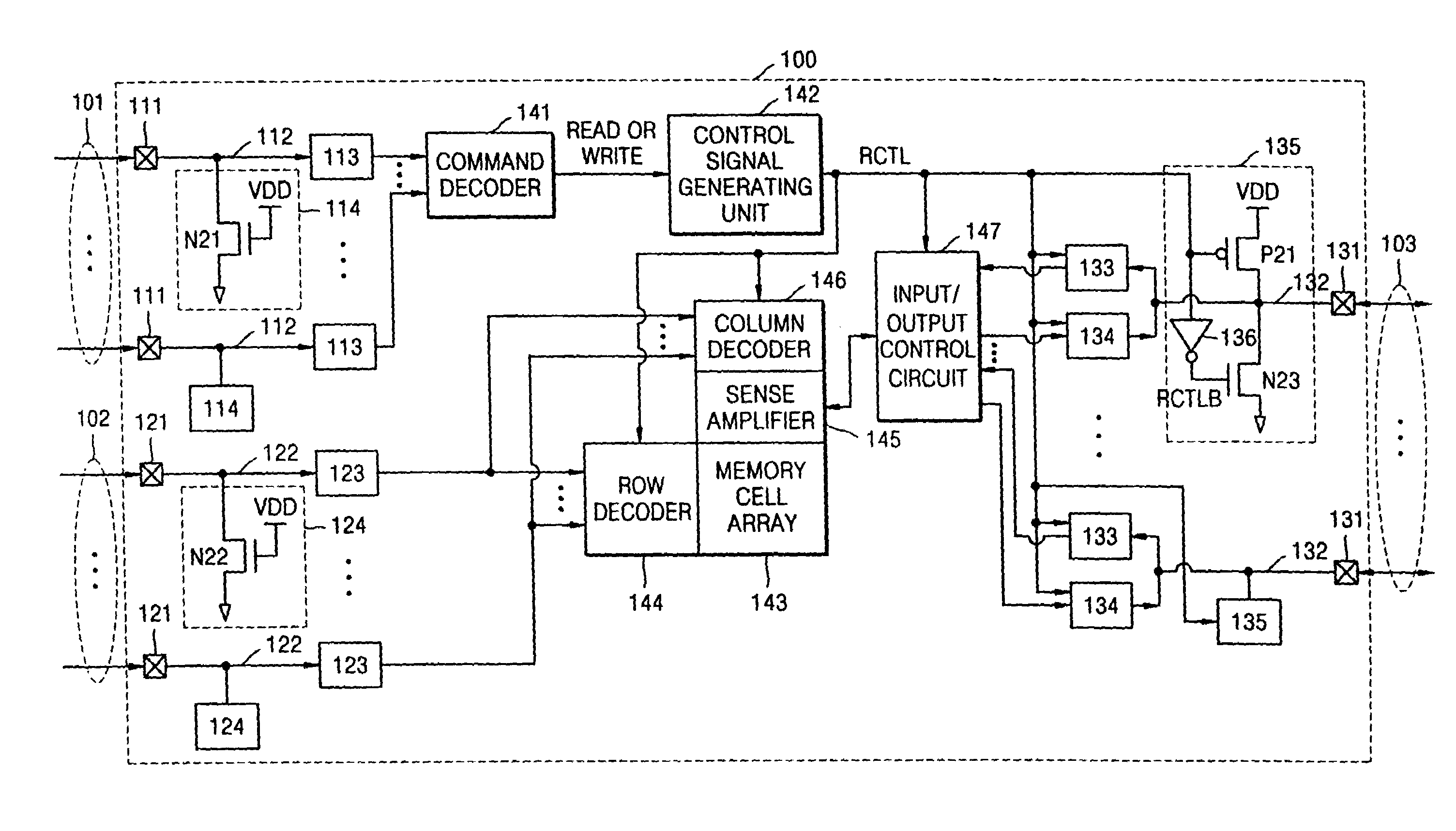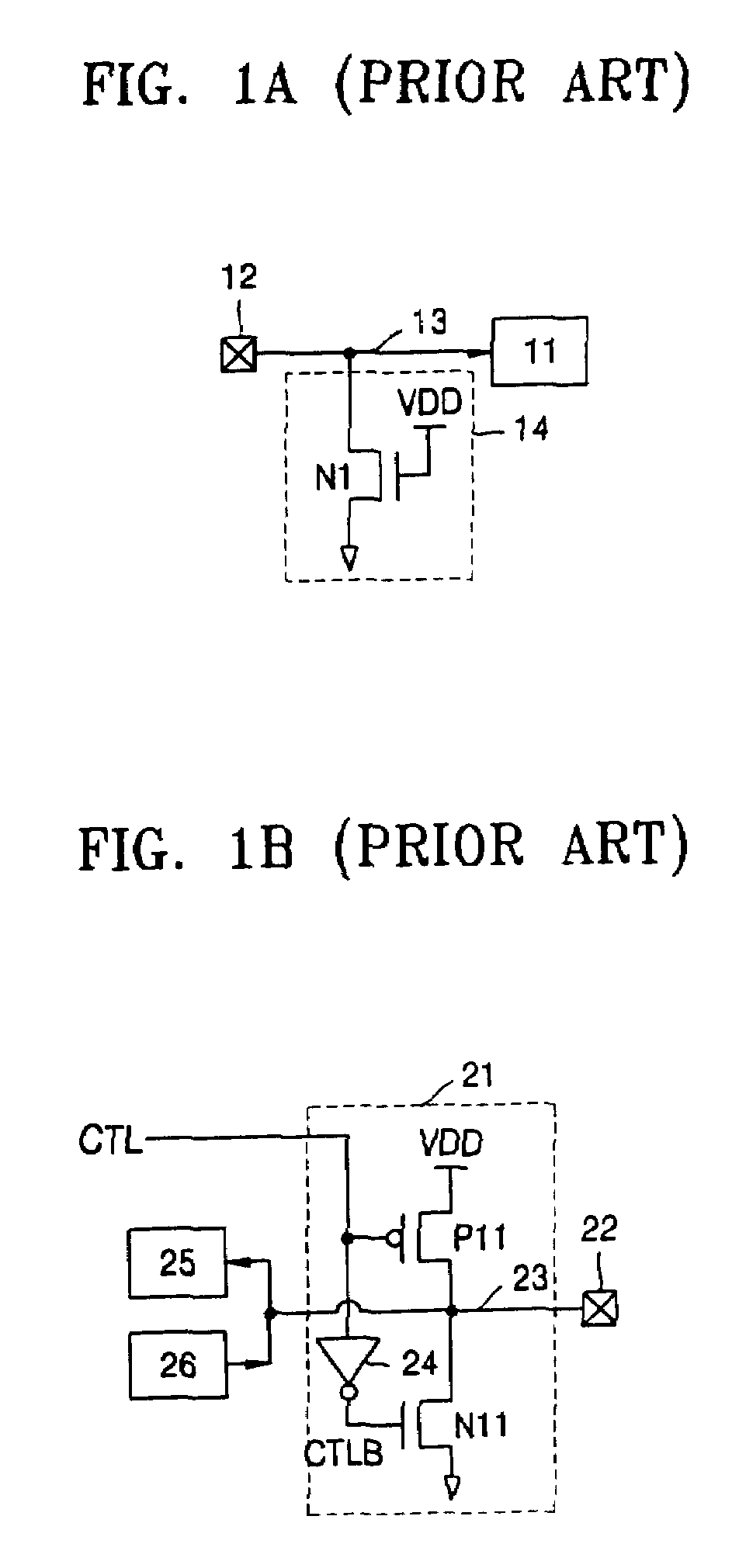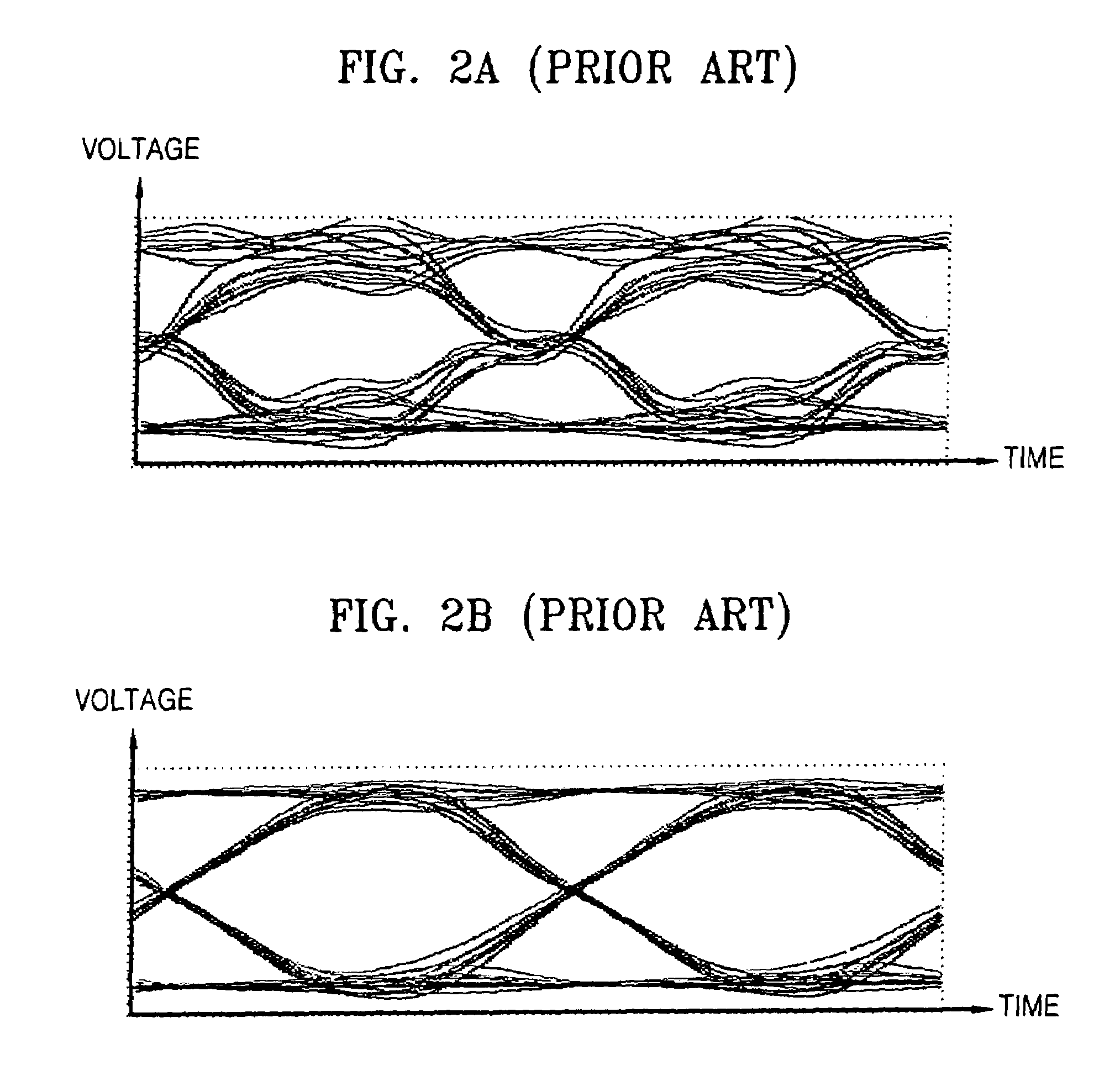Memory device with different termination units for different signal frequencies
a memory device and signal frequency technology, applied in the field of memory devices with different termination units for different signal frequencies, can solve the problems of power consumption disadvantageously increased, high power consumption, and signal distortion on data transfer lines, and achieve the effects of less signal distortion, reduced power consumption, and reduced power consumption
- Summary
- Abstract
- Description
- Claims
- Application Information
AI Technical Summary
Benefits of technology
Problems solved by technology
Method used
Image
Examples
Embodiment Construction
[0033]FIG. 3 is a diagram illustrating a semiconductor memory device 100 according to an embodiment of the present invention. The semiconductor memory device 100 includes components fabricated as an integrated circuit on a semiconductor substrate such as a silicon substrate in one example embodiment of the present invention. For example, the dashed lines inFIG. 3 may out-line the semiconductor substrate having the components of the memory device 100 fabricated therein.
[0034]Referring to FIG. 3, the semiconductor memory device 100 comprises control pins 101, address pins 102, and data pins 103. Each of the control pins 101 is coupled to a respective one of a first set of input / output pads 111, and each of the data pins 103 is coupled to a respective one of a second set of input / output pads 131. Each of the address pins 102 is coupled to a respective one of a third set of input / output pads 121.
[0035]The semiconductor memory device 100 further comprises external control signal input bu...
PUM
 Login to View More
Login to View More Abstract
Description
Claims
Application Information
 Login to View More
Login to View More - R&D
- Intellectual Property
- Life Sciences
- Materials
- Tech Scout
- Unparalleled Data Quality
- Higher Quality Content
- 60% Fewer Hallucinations
Browse by: Latest US Patents, China's latest patents, Technical Efficacy Thesaurus, Application Domain, Technology Topic, Popular Technical Reports.
© 2025 PatSnap. All rights reserved.Legal|Privacy policy|Modern Slavery Act Transparency Statement|Sitemap|About US| Contact US: help@patsnap.com



